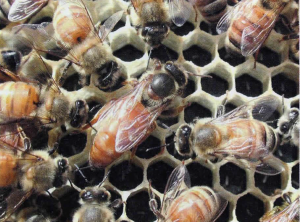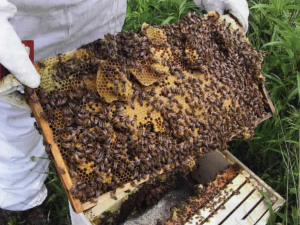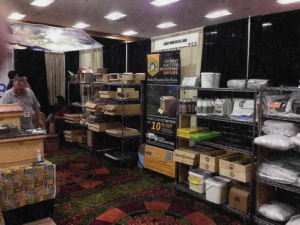By: Ann Harman
This article originally appeared in the Winter 2017 issue of BEEKeeping Your First Three Years
Most of the things you need to be doing this time of year!
Celebrate October First by putting mouse guards on all hives!
It’s time for the queen to take a rest from egg-laying. Do not worry if brood diminishes.
Use this broodless period for Varroa intervention until daytime temperatures are below 57° F.
In cool weather bees will start forming a cluster at 57° F.
Use controls for small hive beetle until weather cools.
Check each hive for adequate Winter stores.
- Warm climate 40 pounds
- Temperate climate 60 pounds
- Cold climate 90 pounds
If colonies are disease-free, frames of stored honey can be moved to provide adequate Winter stores. Watch carefully so you do not move the queen!
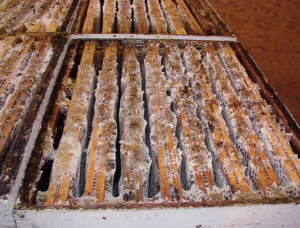
Make sure you hove more than enough honey, and pollen, to keep your bees well fed until the dandelions bloom next Spring. How long is that?
If feeding is necessary the mixture is two parts sugar (or slightly less) to one part water. If you are feeding sugar, be sure to feed protein supplements at the same time.
Do not feed liquid syrup when temperatures are below 57° F.
Do not leave queen excluders on the hive.
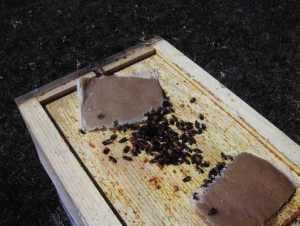
If you are feeding sugar – carbohydrates – make sure you also feed protein at the same time. You don’t eat just carbs, do you?
Remove for cleaning on a cold day. Wax will snap off.
Inspect queen excluders for damage and discard. The queen will find a bent rod or torn plastic.
Inspect all equipment for damage. Set aside for repair – or – fix it now!
Inspect stored comb for damage, excessive drone comb or lumps of cross-comb.
Protect all stored equipment, including plastic queen excluders, from mice.
Woodenware and brood comb can be place in plastic bags and frozen for a week to kill wax moth eggs. Leave bagged and protect from mice.
Clean up the beeyard. Do not leave pieces of equipment lying around.
Make sure hive entrances are clear of weeds and grass so bees can take cleansing flights. Check the bear fence if you live in bear country.
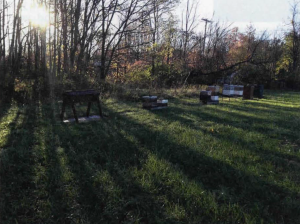
Clean up the beeyard, remove weeds from entrance flightways and make sure you can get to the yard even in the deepest snow.
Wash all bee clothing – veils, jackets, coveralls, gloves. Replace household gloves with new ones.
Clean up your smoker. Make sure it is free of ashes under the grid.
Check on hives once a month to see if food stores are adequate. Do not break the cluster!
If you harvested honey this year use it in cooking, especially during the holiday season.
Read beekeeping magazines and bee books.
Be sure to tell Santa what equipment you are wishing for.
And don’t forget your next club meeting!





